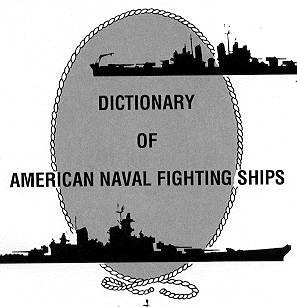
Newport News Shipbuilding (NNS), a division of Huntington Ingalls Industries, is the largest industrial employer in Virginia, and sole designer, builder and refueler of United States Navy aircraft carriers and one of two providers of U.S. Navy submarines. Founded as the Chesapeake Dry Dock and Construction Co. in 1886, Newport News Shipbuilding has built more than 800 ships, including both naval and commercial ships. Located in the city of Newport News, their facilities span more than 550 acres (2.2 km2), strategically positioned in one of the great harbors of the East Coast.

USS Indianapolis (CL/CA-35) was a Portland-class heavy cruiser of the United States Navy, named for the city of Indianapolis, Indiana. Launched in 1931, the vessel served as the flagship for the commander of Scouting Force 1 for eight years, then as flagship for Admiral Raymond Spruance in 1943 and 1944 while he commanded the Fifth Fleet in battles across the Central Pacific during World War II.

The Arleigh Burke class of guided missile destroyers (DDGs) is the United States Navy's first class of destroyer built around the Aegis Combat System and the SPY-1D multifunction passive electronically scanned array radar. The class is named for Admiral Arleigh Burke, an American destroyer officer in World War II, and later Chief of Naval Operations. The class leader, USS Arleigh Burke, was commissioned during Admiral Burke's lifetime.

USS Dubuque (LPD-8), an Austin-class amphibious transport dock, is the second ship of the United States Navy to be named for the city of Dubuque, Iowa.

The Seventh Fleet is a numbered fleet of the United States Navy. It is headquartered at U.S. Fleet Activities Yokosuka, in Yokosuka, Kanagawa Prefecture, Japan. It is part of the United States Pacific Fleet. At present, it is the largest of the forward-deployed U.S. fleets, with 60 to 70 ships, 300 aircraft and 40,000 Navy and Marine Corps personnel. Its principal responsibilities are to provide joint command in natural disaster or military operations and operational command of all naval forces in the region.

USS Marlin (SST-2), originally USS T-2 (SST-2), was a T-1-class training submarine in commission from 1953 to 1973. She was the second submarine of the United States Navy to be named for the marlin, a large game fish. Except for the first 25 early development pre-WWI subs, she was one of the smallest operational submarines ever built for the U.S. Navy.
Aeaea or Eëa was a mythological island said to be the home of the goddess-sorceress Circe. In Homer's Odyssey, Odysseus tells Alcinous that he stayed here for one year on his way home to Ithaca. He says that he could not resist the need to be on this island, not so much for Circe but so that he does not resist the pull. The modern Greek scholar Ioannis Kakridis insists that any attempt at realistic identification is vain, arguing that Homer vaguely located Aeaea somewhere in the eastern part of his world, perhaps near Colchis, since Circe was the sister of Aeëtes, king of Colchis, and because their paternal aunt the goddess Eos had her palace there.

USS Orleck (DD-886), was a Gearing-class destroyer in service with the United States Navy from 1945 to 1982. In October 1982 she was sold to Turkey and renamed Yücetepe . After her final decommissioning the Turkish government transferred Yücetepe to the Southeast Texas War Memorial and Heritage Foundation at Orange, Texas, where she was berthed as a museum ship. The Orleck Foundation then decided to move the ship to the Calcasieu River in Lake Charles, Louisiana.

USS Slater (DE-766) is a Cannon-class destroyer escort that served in the United States Navy and later in the Hellenic (Greek) Navy. The ship was named for Frank O. Slater of Alabama, a sailor killed on the cruiser USS San Francisco during the Naval Battle of Guadalcanal. He was posthumously awarded the Navy Cross for gallantry in action and the Purple Heart. Following service during World War II, the ship was transferred to Greece and renamed Aetos. Decommissioned in 1991, the destroyer escort was returned to the United States.

USS Inca, a 3,381-ton "Liberty" ship, was launched in March 1943 at Los Angeles, California, and entered merchant service later the same month as S.S. William B. Allison, MCE hull 724. Two years later she would be taken into US Navy as stores ship and renamed USS Inca (IX-229). For much of her service as Inca she was also named USS Gamage (IX-227) because of bureaucratic confusion.

USS Snatch (ARS-27), well known as Scripps R/V Argo after conversion to scientific research, was a Diver-class rescue and salvage ship commissioned by the U.S. Navy during World War II and in service from 11 December 1944 through 23 December 1946. Her task was to come to the aid of stricken vessels. The ship is better known from her scientific research role as the Scripps Institution of Oceanography (SIO) research vessel R/V Argo. It is that name, apparently not formally recognized by Navy that maintained title to the vessel, found in the scientific literature and public releases about her wide ranging research voyages.
Circe was a goddess or sorceress in Greek mythology.
The Marietta-class monitors were a pair of ironclad river monitors laid down in the summer of 1862 for the United States Navy during the American Civil War. Construction was slow, partially for lack of labor, and the ships were not completed until December 1865, after the war was over. However the navy did not accept them until 1866 and immediately laid them up. They were sold in 1873 without ever having been commissioned.
HMAS Medea was an auxiliary minesweeper of the Royal Australian Navy (RAN) between 1942 until 1946. Built in 1912 for the Ocean Steam Ship Co. she was sold to the Straits Steam Ship Co. in 1925. She was requisitioned by the Royal Navy in 1939 and converted into an auxiliary minesweeper and named HMS Circe. She was transferred to the Royal Australian Navy in 1942 and renamed HMAS Medea until she was returned to her owners in 1946. She was sold and was scuttled off Sydney on 20 January 1948.
HMS Circe was a 28-gun Enterprise-class sixth-rate frigate of the Royal Navy. She was launched in 1785 but not completed or commissioned until 1790. She then served in the English Channel on the blockade of French ports before she was wrecked in 1803.

Project Hula was a program during World War II in which the United States transferred naval vessels to the Soviet Union in anticipation of the Soviets eventually joining the war against Japan, specifically in preparation for planned Soviet invasions of southern Sakhalin and the Kuril islands. Based at Cold Bay in the Territory of Alaska, the project was active during the spring and summer of 1945. It was the largest and most ambitious transfer program of World War II.














